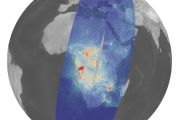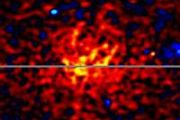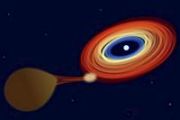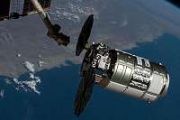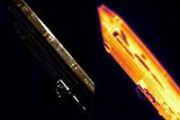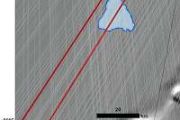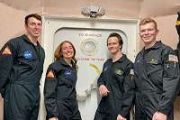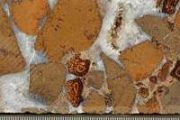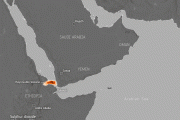
Copernical Team
Rare micrometeorite may have originated from a Ceres-like asteroid
 A micrometeorite, called TAM19B-7, may have originated from a Ceres-like asteroid, according to a recent study conducted by researchers Maitrayee Bose and Victoria Froh of Arizona State University, Martin Suttle of The Open University, U.K., and Luigi Folco, of the University of Pisa, Italy.
They will be presenting the results of their study at the 53rd annual American Astronomical Society
A micrometeorite, called TAM19B-7, may have originated from a Ceres-like asteroid, according to a recent study conducted by researchers Maitrayee Bose and Victoria Froh of Arizona State University, Martin Suttle of The Open University, U.K., and Luigi Folco, of the University of Pisa, Italy.
They will be presenting the results of their study at the 53rd annual American Astronomical Society China's Mars probes suspend explorations due to Sun outage
 China's Mars rover and orbiter have suspended explorations since mid-September, to wait out a period of sun outage, the China National Space Administration said on Tuesday.
A sun outage refers to a phenomenon when Mars and the Earth move to either side of the sun and the three are almost perfectly aligned. During this period, the solar electromagnetic radiation will increase and disrupt th
China's Mars rover and orbiter have suspended explorations since mid-September, to wait out a period of sun outage, the China National Space Administration said on Tuesday.
A sun outage refers to a phenomenon when Mars and the Earth move to either side of the sun and the three are almost perfectly aligned. During this period, the solar electromagnetic radiation will increase and disrupt th Student experiments float over New Mexico
 University students from North and South America put their classroom knowledge and technical skills to the test when their experiments flew on a recent NASA scientific balloon flight over New Mexico.
Launched Sept. 14 from Fort Sumner, New Mexico, the balloon carried the High-Altitude Student Platform or HASP, with its 11 student experiments and also 23 student experiments through the Rock
University students from North and South America put their classroom knowledge and technical skills to the test when their experiments flew on a recent NASA scientific balloon flight over New Mexico.
Launched Sept. 14 from Fort Sumner, New Mexico, the balloon carried the High-Altitude Student Platform or HASP, with its 11 student experiments and also 23 student experiments through the Rock Simulating space on Earth: NASA receives hardware for testing satellite servicing tech
 In August 2021, new testing equipment arrived at NASA's Goddard Space Flight Center in Greenbelt, Maryland, in the form of a gravity offset table. NASA engineers will use the table to test robotic satellite servicing technologies that will one day operate in space.
A gravity offset table is a large piece of granite used for testing space payloads in simulated zero-gravity conditions. Measu
In August 2021, new testing equipment arrived at NASA's Goddard Space Flight Center in Greenbelt, Maryland, in the form of a gravity offset table. NASA engineers will use the table to test robotic satellite servicing technologies that will one day operate in space.
A gravity offset table is a large piece of granite used for testing space payloads in simulated zero-gravity conditions. Measu Eutelsat raises its shareholding in OneWeb
 Eutelsat Communications has exercised a call option on a portion of the latest OneWeb funding round subscribed by Bharti, for a consideration of $165 million, taking its shareholding from 17.6% to 22.9%.
The transaction was undertaken on identical financial terms to Eutelsat's initial investment of $550 million announced in April and completed on 8 September. The completion of this latest
Eutelsat Communications has exercised a call option on a portion of the latest OneWeb funding round subscribed by Bharti, for a consideration of $165 million, taking its shareholding from 17.6% to 22.9%.
The transaction was undertaken on identical financial terms to Eutelsat's initial investment of $550 million announced in April and completed on 8 September. The completion of this latest NASA scientist looks to AI, lensing to find masses of free-floating planets
 Exoplanet hunters have found thousands of planets, most orbiting close to their host stars, but relatively few alien worlds have been detected that float freely through the galaxy as so-called rogue planets, not bound to any star. Many astronomers believe that these planets are more common than we know, but that our planet-finding techniques haven't been up to the task of locating them.
Mo
Exoplanet hunters have found thousands of planets, most orbiting close to their host stars, but relatively few alien worlds have been detected that float freely through the galaxy as so-called rogue planets, not bound to any star. Many astronomers believe that these planets are more common than we know, but that our planet-finding techniques haven't been up to the task of locating them.
Mo Empowering Artemis with communications and navigation interoperability
 With Artemis, NASA will establish a long-term presence at the Moon, opening more of the lunar surface to exploration than ever before. This growth of lunar activity will require new, more robust communications, navigation, and networking capabilities. NASA's Space Communications and Navigation (SCaN) program has developed the LunaNet architecture to meet these needs.
LunaNet will leverage
With Artemis, NASA will establish a long-term presence at the Moon, opening more of the lunar surface to exploration than ever before. This growth of lunar activity will require new, more robust communications, navigation, and networking capabilities. NASA's Space Communications and Navigation (SCaN) program has developed the LunaNet architecture to meet these needs.
LunaNet will leverage Highly porous rocks responsible for Bennu's surprisingly craggy surface
 Scientists thought asteroid Bennu's surface would be like a sandy beach, abundant in fine sand and pebbles, which would have been perfect for collecting samples. Past telescope observations from Earth's orbit had suggested the presence of ??large swaths of fine-grain material called fine regolith that's smaller than a few centimeters.
But when the spacecraft of NASA's University of Arizona
Scientists thought asteroid Bennu's surface would be like a sandy beach, abundant in fine sand and pebbles, which would have been perfect for collecting samples. Past telescope observations from Earth's orbit had suggested the presence of ??large swaths of fine-grain material called fine regolith that's smaller than a few centimeters.
But when the spacecraft of NASA's University of Arizona Lasers to probe origin of life on a Moon
 On Saturn's giant moon Titan, liquid methane and other hydrocarbons rain down, carving rivers, lakes and seas in a landscape of frozen water. The complex chemistry on this icy world could be analogous to the period when life first emerged on Earth, or it might yield an entirely new type of life. And even farther - light-years away in deep space, a black hole shreds the ultra-dense core of a dead
On Saturn's giant moon Titan, liquid methane and other hydrocarbons rain down, carving rivers, lakes and seas in a landscape of frozen water. The complex chemistry on this icy world could be analogous to the period when life first emerged on Earth, or it might yield an entirely new type of life. And even farther - light-years away in deep space, a black hole shreds the ultra-dense core of a dead NASA's SLS passes key review for Artemis I ,ission
 NASA has completed the design certification review (DCR) for the Space Launch System Program (SLS) rocket ahead of the Artemis I mission to send the Orion spacecraft to the Moon. The review examined all the SLS systems, all test data, inspection reports, and analyses that support verification, to ensure every aspect of the rocket is technically mature and meets the requirements for SLS's first f
NASA has completed the design certification review (DCR) for the Space Launch System Program (SLS) rocket ahead of the Artemis I mission to send the Orion spacecraft to the Moon. The review examined all the SLS systems, all test data, inspection reports, and analyses that support verification, to ensure every aspect of the rocket is technically mature and meets the requirements for SLS's first f 






